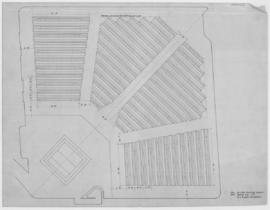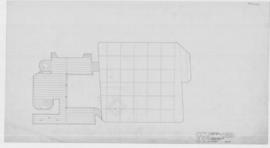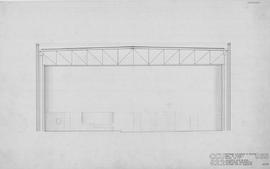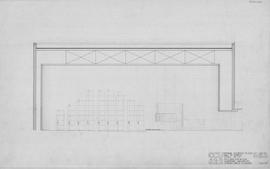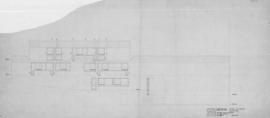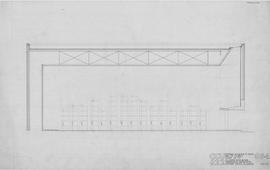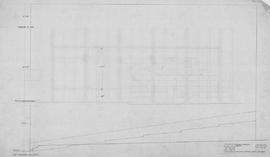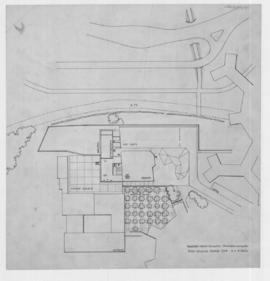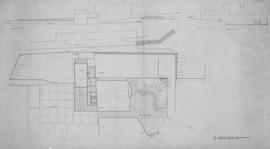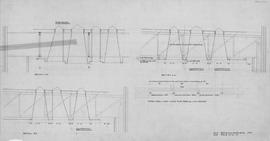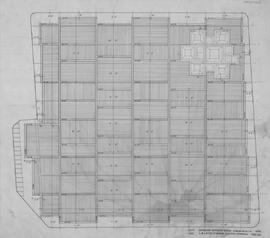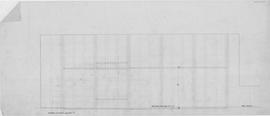Key Information
Reference code
Title
Date(s)
- Feb 1960-Jan 1972 (Creation)
Level of description
Subfonds
Extent
2 boxes, 17 folders
Content and Structure
Scope and content
Job files, images and drawings related to project.
Appraisal, destruction and scheduling
This material has been appraised in line with Glasgow School of Art Archives and Collections standard procedures.
Accruals
System of arrangement
Three reference codes were used for this projects CCUM, CHCU & CCU. The code CCU was used for the catalogue.
General Information
Name of creator
Administrative history
William Alexander Kidd was born in Greenock in 1879, the son of William Kidd, ironmonger and his wife Margaret Colquhoun Barr. He joined the practice of James Salmon & Son in 1898 as an apprentice and studied at Glasgow School of art from that year until 1902, also attending classes at the Glasgow & West of Scotland Technical College. He became chief draughtsman in the Salmon practice sometime before 1911, by which time the firm had become Salmon Son & Gillespie. He remained with John Gaff Gillespie after the latter took charge of the practice following the death of William Forrest Salmon, and Gillespie took him into partnership in 1918. When Gillespie died on 7 May 1926, leaving estate of £1,950 4s 11d to his wife Agnes, Kidd was his executor and became sole partner.
Jack Antonio Coia (born 1898) had been taken on by Gillespie as an apprentice in October 1915 at a salary of 4 shillings a week with no demand for a premium, and had subsequently worked with Alexander Nisbet Paterson and Alexander Hislop in Glasgow, and with Herbert A Welch and Hollis in London, before returning to Glasgow in 1927. On hearing he was back in Glasgow, Kidd appealed to him to return to assist in the reconstruction of the Smith warehouse as the Ca' d'Oro, for which Gillespie had left only sketch designs. Kidd died in 1928 while the work was in progress and Coia inherited the practice, which now became Gillespie Kidd and Coia, but there was little business apart from the fitting of Leon's shop at 89 St Vincent Street, and Coia joined the teaching staff of Glasgow School of Art.
In 1931 Coia approached Archbishop Donald Mackintosh for work on the programme of church extension then planned. This resulted in a series of important brick-built church commissions of continental inspiration and in about 1938, his senior assistant T Warnett Kennedy was taken into partnership. Kennedy was born c.1913 and articled to Coia in about 1927, after a brief spell with James Austen Laird. He returned to Coia thereafter, and remained with him apart from a short period with Honeyman and Jack. As a student he had been editor of the magazine 'Vista' published quarterly which included articles by Hans Poelzig, Ragnar Ostberg, R H Wilenski and other major names of the 1930s. Coia and Kennedy worked closely together but in Kennedy's words 'Jack thought with his fingers. He sketched at lightning speed. I pontificated on the emergence of abstract art … During the 1938 British Empire Exhibition we slept on the floor of the office an average of three nights a week.'
In 1939 Coia married Eden Bernard. Earlier in the same year he was commissioned to design Knightswood Secondary School and complete Gillespie’s Municipal Buildings at Stirling but both these projects were cancelled. When Italy entered the war in 1940, Coia briefly lost control of his office and practice at 239 St Vincent Street. The Salmon Son & Gillespie records were lost to salvage at that point but he did manage to retain those relating to his own practice from 1927. He quickly re-established himself under the same practice title at 199 Bath Street. Although admitted FRIBA on 20 May 1941, lack of business obliged him to retrench, combining house and office at 7 Hamilton Drive. In the later war years his income came mainly from work in the family café, such free time as he had being spent on obtaining a degree in town planning.
In 1945 Sam Bunton asked Coia to help with repairing war damage in Clydebank, Kennedy having earlier been asked to help at Dumbarton. This enabled him to restart the practice, taking on as apprentice Isi Metzstein, who was a refugee, and for a time his own brother John. In 1948 the practice moved out of Hamilton Drive to 19 Waterloo Street and in 1954 Andrew MacMillan joined the practice from East Kilbride Development Corporation. In 1956 both house and office moved to 20 Park Circus, and in the course of the move a burst water pipe destroyed most of the practice drawings. (At this time John Peter Coia, Jack's much younger brother, was working in the practice, having undertaken his apprenticeship there from 1933 to 1938.) Thereafter Metzstein and MacMillan undertook most of the design work. The last important building in which Coia had a major hand was St Charles, Kelvinside, where his design was developed by Andrew MacMillan and Joe Taylor.
Coia was elected ARSA in 1954 and full academician in 1962. He was appointed CBE in 1967 and awarded the Royal Gold Medal in 1969 followed by honorary degrees from the universities of Glasgow (1970) and Strathclyde (1976). In person he was in Patrick Nuttgens's words 'small, intense, unkempt, angry and bloody-minded', mainly as a result of wartime experiences and the post-war decision not to complete the Stirling Municipal Buildings as Gillespie had designed them. The poverty of contemporary architecture, dissatisfaction with the competition system and the destruction of some of his favourite buildings also coloured his outlook in his later years, his views being trenchantly expressed at the Royal Fine Art Commission of which he was for a time a member. In his retirement he spent much of his time at Glendaruel. He died on 14 August 1981, the funeral homily being preached by his pupil Father Kenneth Nugent SJ.
Metzstein and MacMillan were to carry out most of the practice’s design work from around 1957 onwards, as Coia approached retirement. Metzstein was elected a student member of the RIBA in 1957 though he does not seem to have become an Associate. MacMillan was elected ARIBA in 1963. In 1987 he is listed as being Professor in the Mackintosh School of Architecture.
Working in a bold and highly original Modernist idiom, Metzstein and MacMillan collaborated on a series of notable Roman Catholic churches between that year and 1980, of which St Bride’s in East Kilbride (1963–4) is among the most remarkable. Their masterwork is considered to be St Peter’s Seminary, Cardross, completed in 1966, which was to be the first modern building to be awarded Category-A listed status. They were also responsible for a series of important university buildings, including halls of residence at Hull (1963–7), additions to Wadham College, Oxford (1971–7), and Robinson College, Cambridge (1974–80). Although strongly inspired by Le Corbusier, they drew on sources as diverse as Victorian Glasgow, medieval urbanism and abstraction, and Metzstein always emphasised the importance of designing from first principles. The company was wound up in 1987.
MacMillan and Metzstein were to receive RIBA lifetime achievement awards for teaching in 2007. Metzstein died in 2012, and MacMillan passed away in 2014.
Archival history
The Church, Hall & Presbytery of the Sacred Heart stand on an enclosed south facing slope in the Kildrum district of Cumbernauld.
The main entrance to the complex si from the pedestrian way running along the south side of the Church to Catholic School square & on to the service road to the Kildrum 14 site. The gradient on the site was utilized to articulate the Church/Presbytery relationship.
The Lady Chapel & Baptistry were placed along the West side of the Church and are linked directly to the Church by the Narthex & Sacristies to form an intimate courtyard over the entrance to the Church Hall. Entrance to the Narthex from the lower level is gained by an imposing staircase undwer which the switch gear is housed.
Natural light to the Narthex, Lady Chapel and Sacristies is provided by floor to ceiling glass and timber screen of random pattern, while natural lighting in the Church is provided by a cluster of projecting roof lights forming part of the impressive ceiling design. One of the most interesting features are the 14 stations of the cross which have been specially degisnge to read as a series of perforations of coloured glass internally, while externally, the deeply channelled window recesses exploit the full quality of the structure.
The wall structure consists of steel columns swathed in brickwork rendered white, while a timber boarded ceiling is suspended from the roof trusses. Altars & font are of granite and the seating is in the form of long mahogony benches.
The Presbytery, which is of rendered brickwork construction with concrete floors & a flat roof, provides accommodation for the parish priest and 2 curates with all necessary ancillaries. In addtion, there is a church hall with stage, kitchen, dressing room, 2 call rooms, a guest room, 2 servants' rooms & 2 sacristies, the latter being linked directly to the Sanctuary in the form of a bridge, while the roof of the Lady Chapel & Sacristies has been designed as a roof garden.



